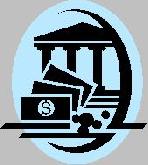
 |
|
| Financial Terms | |
| Dupont system of financial control |
|
Information about financial, finance, business, accounting, payroll, inventory, investment, money, inventory control, stock trading, financial advisor, tax advisor, credit.
Main Page: finance, money, credit, accounting, business, inventory, payroll, inventory control, Also see related: mortgage, insurance, homebuyer, financing, home buyer, property, condo, real estate, credit, |
Definition of Dupont system of financial control
Dupont system of financial controlHighlights the fact that return on assets (ROA) can be expressed in terms
Related Terms:control premiumthe additional value inherent in the control interest as contrasted to a minority interest, which reflects its power of control DLOC (discount for lack of control)an amount or percentage deducted from a pro rata share of the value of 100% of an equity interest in a business, to reflect the absence of some or all of the powers of control. Accelerated cost recovery system (ACRS)Schedule of depreciation rates allowed for tax purposes. Changes in Financial PositionSources of funds internally provided from operations that alter a company's Clearing House Automated Payments System (CHAPS)A computerized clearing system for sterling funds Clearing House Interbank Payments System (CHIPS)An international wire transfer system for high-value Control50% of the outstanding votes plus one vote.  Controlled disbursementA service that provides for a single presentation of checks each day (typically in Controlled foreign corporation (CFC)A foreign corporation whose voting stock is more than 50% owned ControllerThe corporate manager responsible for the firm's accounting activities. Corporate financial managementThe application of financial principals within a corporation to create and Corporate financial planningfinancial planning conducted by a firm that encompasses preparation of both Country financial riskThe ability of the national economy to generate enough foreign exchange to meet European Monetary System (EMS)An exchange arrangement formed in 1979 that involves the currencies Exchange controlsGovernmental restrictions on the purchase of foreign currencies by domestic citizens or Federal Reserve SystemThe central bank of the U.S., established in 1913, and governed by the Federal  Financial analystsAlso called securities analysts and investment analysts, professionals who analyze Financial assetsClaims on real assets. Financial controlThe management of a firm's costs and expenses in order to control them in relation to Financial distressEvents preceding and including bankruptcy, such as violation of loan contracts. Financial distress costsLegal and administrative costs of liquidation or reorganization. Also includes Financial engineeringCombining or dividing existing instruments to create new financial products. Financial futureA contract entered into now that provides for the delivery of a specified asset in exchange Financial intermediariesInstitutions that provide the market function of matching borrowers and lenders or Financial leaseLong-term, non-cancelable lease. Financial leverageUse of debt to increase the expected return on equity. financial leverage is measured by Financial leverage clienteleA group of investors who have a preference for investing in firms that adhere to Financial leverage ratiosRelated: capitalization ratios. Financial marketAn organized institutional structure or mechanism for creating and exchanging financial assets. Financial objectivesObjectives of a financial nature that the firm will strive to accomplish during the period Financial planA financial blueprint for the financial future of a firm. Financial planningThe process of evaluating the investing and financing options available to a firm. It Financial pressThat portion of the media devoted to reporting financial news. Financial ratioThe result of dividing one financial statement item by another. Ratios help analysts interpret Financial riskThe risk that the cash flow of an issuer will not be adequate to meet its financial obligations. Foreign exchange controlsVarious forms of controls imposed by a government on the purchase/sale of Imputation tax systemArrangement by which investors who receive a dividend also receive a tax credit for Just-in-time inventory systemssystems that schedule materials/inventory to arrive exactly as they are London International Financial Futures Exchange (LIFFE)A London exchange where Eurodollar futures Long-term financial planfinancial plan covering two or more years of future operations. London International Financial Futures Exchange (LIFFE)London exchange where Eurodollar futures as well as futures-style options are traded. Multirule systemA technical trading strategy that combines mechanical rules, such as the CRISMA Non-financial servicesInclude such things as freight, insurance, passenger services, and travel. Nonsystematic riskNonmarket or firm-specific risk factors that can be eliminated by diversification. Also Notes to the financial statementsA detailed set of notes immediately following the financial statements in Perfectly competitive financial marketsMarkets in which no trader has the power to change the price of Pro forma financial statementsfinancial statements as adjusted to reflect a projected or planned transaction. Progressive tax systemA tax system wherein the average tax rate increases for some increases in income but Risk controlled arbitrageA self-funding, self-hedged series of transactions that generally utilize mortgage Short-term financial planA financial plan that covers the coming fiscal year. Society for Worldwide Interbank Financial Telecommunications (SWIFT)A dedicated computer network to support funds transfer messages internationally between over 900 member banks worldwide. Split-rate tax systemA tax system that taxes retained earnings at a higher rate than earnings that are Statement of Financial Accounting Standards No. 8This is a currency translation standard previously in Statement of Financial Accounting Standards No. 52This is the currency translation standard currently SystematicCommon to all businesses. Systematic riskAlso called undiversifiable risk or market risk, the minimum level of risk that can be Systematic risk principleOnly the systematic portion of risk matters in large, well-diversified portfolios. Two-tier tax systemA method of taxation in which the income going to shareholders is taxed twice. Unsystematic riskAlso called the diversifiable risk or residual risk. The risk that is unique to a company MACRS (Modified Accelerated Cost Recovery System)A depreciation method created by the IRS under the Tax Reform Act of 1986. Companies must use it to depreciate all plant and equipment assets installed after December 31, 1986 (for tax purposes). Accounting systemA set of accounts that summarize the transactions of a business that have been recorded on source documents. Budgetary controlThe process of ensuring that actual financial results are in line with targets – see variance Controllable profitThe profit made by a division after deducting only those expenses that can be controlled by the Cost controlThe process of either reducing costs while maintaining the same level of productivity or maintaining costs while increasing productivity. Financial accountingThe production of financial statements, primarily for those interested parties who are external to the business. Financial reports or statementsThe Profit and Loss account, Balance Sheet and Cash Flow statement of a business. Financial yearThe accounting period adopted by a business for the production of its financial statements. Planning, programming and budgeting system (PPBS)A method of budgeting in which budgets are allocated to projects or programmes rather than to responsibility centres. Control accountAn account maintained in the general ledger that holds the balance without the detail. The detail is maintained in a subsidiary ledger. Periodic inventory systemAn inventory system in which the balance in the Inventory account is adjusted for the units sold only at the end of the period. Perpetual inventory systemAn inventory system in which the balance in the Inventory account is adjusted for the units sold each time a sale is made. statement of financial conditionSee balance sheet. financial leverageThe equity (ownership) capital of a business can serve financial reports and statementsfinancial means having to do with internal accounting controlsRefers to forms used and procedures management controlThis is difficult to define in a few words—indeed, an Systematic RiskThe amount of total risk that cannot be eliminated by portfolio Unsystematic RiskThe amount of total risk that can be eliminated by diversification by actual cost systema valuation method that uses actual direct business intelligence (BI) systema formal process for gathering and analyzing information and producing intelligence to meet decision making needs; requires information about charge-back systema system using transfer prices; see transfer control charta graphical presentation of the results of a controllable costa cost over which a manager has the ability to authorize incurrence or directly influence magnitude controllable variancethe budget variance of the two variance approach to analyzing overhead variances controllerthe chief accountant (in a corporation) who is responsible controllingthe process of exerting managerial influence on cost control systema logical structure of formal and/or informal cost management system (CMS)a set of formal methods enterprise resource planning (ERP) systema packaged software program that allows a company to financial accountinga discipline in which historical, monetary financial budgeta plan that aggregates monetary details financial incentivea monetary reward provided for performance flexible manufacturing system (FMS)a production system in which a single factory manufactures numerous variations hybrid costing systema costing system combining characteristics internal controlany measure used by management to protect job order costing systema system of product costing used just-in-time manufacturing systema production system that attempts to acquire components and produce inventory only as needed, to minimize product defects, and to management control system (MCS)an information system that helps managers gather information about actual organizational occurrences, make comparisons against plans, management information system (MIS)a structure of interrelated elements that collects, organizes, and communicates Related to : financial, finance, business, accounting, payroll, inventory, investment, money, inventory control, stock trading, financial advisor, tax advisor, credit. |